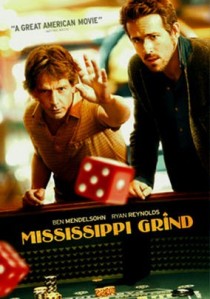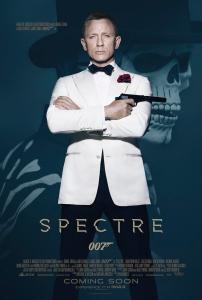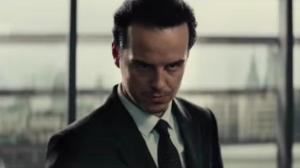 Youth is Italian director Paolo Sorrentino’s seventh film and is again indicative of how few living directors can top him in terms of his dazzling skills behind the camera. Of course there are people like Ridley Scott, Martin Scorsese and Paul Thomas Anderson who are clearly technically gifted but there is something unique about Sorrentino. Through his elegant but often swooping camera movements, strange unique framing and at times, quirky choice of clear and precise visuals, he is the closest Italian cinema has come to producing someone who could be compared with Federico Fellini.
Youth is Italian director Paolo Sorrentino’s seventh film and is again indicative of how few living directors can top him in terms of his dazzling skills behind the camera. Of course there are people like Ridley Scott, Martin Scorsese and Paul Thomas Anderson who are clearly technically gifted but there is something unique about Sorrentino. Through his elegant but often swooping camera movements, strange unique framing and at times, quirky choice of clear and precise visuals, he is the closest Italian cinema has come to producing someone who could be compared with Federico Fellini.
Youth, like much of Fellini’s output, is centred upon vignettes – all linked in this case by the setting of a luxury resort in the French Alps. The broad plot outline revolves around elderly musician Fred Ballinger (Michael Caine) and his equally old director friend, Mick Boyle (Harvey Keitel). When Mick’s son abandons his wife, Fred’s daughter Lena (Rachel Weisz), for singer Paloma Faith (playing herself strangely but excellently), it causes these characters to re-evaluate their lives. Also in the hotel is disgruntled Hollywood actor Jimmy Tree (an against type Paul Dano) and the legendary but now obese retired footballer Diego Maradona (Sorrentino being Neapolitan, thanked Maradona during his Oscar acceptance speech for The Great Beauty in 2014).

Caine (left), Keitel (right)
Sorrentino’s scripts are often dense and complex and Youth is no exception. It is very funny at times, but there is a darkness lurking underneath the humour. The film appears, at first, to be dealing with the topic of old age, which would be no surprise since the director’s previous works The Family Friend, The Consequences of Love, Il Divo and The Great Beauty were all centred upon elderly protagonists. In a poignant and tender moment Keitel’s director asks one of his young screenwriters to view her friends through the wrong end of a telescope after showing her a far-off mountain through the right one. “Being young makes everything close,” he says. “Being old makes everything far away”. There are moments of quiet terror as Mick’s realises that there are large portions of his own life that he can simply no longer remember. There’s a scene in which Mick and Fred can’t help but stare at Miss Universes’ naked body in a swimming pool, not in lecherous manner, but in an envious way due to her vitality.

Rachel Weisz
However, after processing the film in my mind for days after viewing, I believe Youth is about life in general. The characters who live in their memories and cannot help but focus on the past do not engage with the present. Fred’s remorse for his wife and memories of a better time trap him in the past. Mick’s goal to create a film which will be seen as his ‘testament’ is failing because as his leading lady bluntly states (Jane Fonda – whose character appears to have been inspired by Jessica Lange): “you don’t know how to see the world anymore”. Paul Dano’s character is angered by fans recognising him from a film he appeared in which he does not deem high art. The characters who are the most engaged with the present such as Fonda’s aging diva, “television is the future, in fact it’s actually the present” she argues to Mick, or Paloma Faith’s character, are the one’s who seem the most at ease with their life.
 The cast is universally terrific. Rachel Weisz delivers a straight to camera monologue, similar to Marion Cottilard in Macbeth and Elizabeth Moss in Queen of Earth recently, which although is pure plot exposition, manages to be captivating and compelling. Michael Caine’s downtrodden, glum portrayal of a man questioning his life’s work is not unlike Toni Servillo’s leading roles in Sorrentino’s previous films. However, Caine adds a certain ‘distant fatherly charm’, as Peter Bradshaw notes in his Guardian review, and feels slightly more relatable to the everyman than Servillo was. Harvey Keitel, an actor who has not been offered a role worthy of his immense talent since the 90s, is both hilariously direct, delivering lines such as “Lena is a beautiful woman and this one here (Paloma Faith) is the most insignificant woman on the face of the planet”, but also heart-breaking as he realises that his final ‘testament’ may never come into fruition. The cinematography by Luca Bigazzi is gorgeous. The film’s setting, although very similar to the earlier in the year Clouds of Sils Maria, is utilised completely differently. While the mountain ranges of Sils Maria engulfed the characters in a very claustrophobic way, here they express freedom through the recurrent motif of floating – whether it be the elderly levitating monk who lives on the hotel grounds or Lena, at her most happy, being suspended from the rock-cliffs mountain climbing.
The cast is universally terrific. Rachel Weisz delivers a straight to camera monologue, similar to Marion Cottilard in Macbeth and Elizabeth Moss in Queen of Earth recently, which although is pure plot exposition, manages to be captivating and compelling. Michael Caine’s downtrodden, glum portrayal of a man questioning his life’s work is not unlike Toni Servillo’s leading roles in Sorrentino’s previous films. However, Caine adds a certain ‘distant fatherly charm’, as Peter Bradshaw notes in his Guardian review, and feels slightly more relatable to the everyman than Servillo was. Harvey Keitel, an actor who has not been offered a role worthy of his immense talent since the 90s, is both hilariously direct, delivering lines such as “Lena is a beautiful woman and this one here (Paloma Faith) is the most insignificant woman on the face of the planet”, but also heart-breaking as he realises that his final ‘testament’ may never come into fruition. The cinematography by Luca Bigazzi is gorgeous. The film’s setting, although very similar to the earlier in the year Clouds of Sils Maria, is utilised completely differently. While the mountain ranges of Sils Maria engulfed the characters in a very claustrophobic way, here they express freedom through the recurrent motif of floating – whether it be the elderly levitating monk who lives on the hotel grounds or Lena, at her most happy, being suspended from the rock-cliffs mountain climbing.
Verdict 3.5/4
Youth is deep and complex, but also dazzling and elegant. It is tinged with both humour and sadness and benefits from winning performances and a masterly direction.
 W/ Bob and David is Netfix’s new sketch show which reunites Bob Odenkirk and David Cross of Mr. Show fame. Although it only consists of four half-hour long episodes, as well as an hour long documentary on the making of the program, the show does not feel slight in anyway. W/ Bob and David manages to pack so many memorable gags into each of these episodes. The show feels a lot more consistent than other sketch comedy such as Little Britain or more recently Key & Peele, perhaps due to fact that sketches often bleed into each other. For instance, one sketch ends with people in an office going to a bar and the next sketch is set in the bar in which they go to. Also, each episode has a framing device in which every sketch neatly fits into. As a result, the show feels focused but the fact that it is shot in front of a live audience adds an edge and looseness to the proceedings.
W/ Bob and David is Netfix’s new sketch show which reunites Bob Odenkirk and David Cross of Mr. Show fame. Although it only consists of four half-hour long episodes, as well as an hour long documentary on the making of the program, the show does not feel slight in anyway. W/ Bob and David manages to pack so many memorable gags into each of these episodes. The show feels a lot more consistent than other sketch comedy such as Little Britain or more recently Key & Peele, perhaps due to fact that sketches often bleed into each other. For instance, one sketch ends with people in an office going to a bar and the next sketch is set in the bar in which they go to. Also, each episode has a framing device in which every sketch neatly fits into. As a result, the show feels focused but the fact that it is shot in front of a live audience adds an edge and looseness to the proceedings.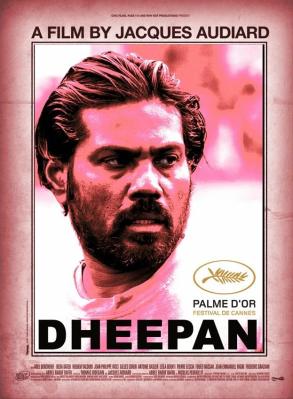 Dheepan, the 2015 Palme D’or winner, displays the very best of auteur Jacques Audiard’s ability. He manages to expertly blend realistic, human characters and their struggles with elements of gritty crime, in a way which creates genre movies with real heart and soul. He did this with Read My Lips, in which a male ex-con and a deaf female secretary form an intimate bond, The Beat that My Heart Skipped revolved around a man torn by his criminal life and his dream of becoming a concert pianist and now Dheepan, which centers upon Sri Lankan refugees who emigrate to France but are situated by the authorities into an area where crime runs rampant.
Dheepan, the 2015 Palme D’or winner, displays the very best of auteur Jacques Audiard’s ability. He manages to expertly blend realistic, human characters and their struggles with elements of gritty crime, in a way which creates genre movies with real heart and soul. He did this with Read My Lips, in which a male ex-con and a deaf female secretary form an intimate bond, The Beat that My Heart Skipped revolved around a man torn by his criminal life and his dream of becoming a concert pianist and now Dheepan, which centers upon Sri Lankan refugees who emigrate to France but are situated by the authorities into an area where crime runs rampant.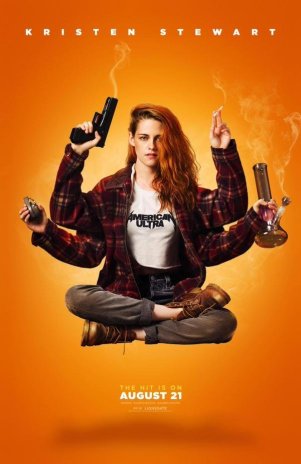 American Ultra is part of the wave of original summer blockbusters in 2015 that failed to make a profit. By “original”, I mean films such as Jupiter Ascending and Tomorrowland which were not part of an existing franchise and were created by talented writers and directors with the goal of delivering something fresh to cinema audiences (I personally had never seen a 12a film in which a subplot involved its lead protagonist selling her eggs to buy a telescope before Jupiter Ascending). While these films may have been of varying quality, they should have at least been praised for building new, interesting worlds. However, this was not the case. American Ultra received mixed reviews and made a reported $15 million on a $22 million budget. Due to its incoming DVD release, I decided to watch the film and I am pleased to report that the film is a piece of solid entertainment, elevated by an entertaining script from Chronicle’s Max Landis and strong performances.
American Ultra is part of the wave of original summer blockbusters in 2015 that failed to make a profit. By “original”, I mean films such as Jupiter Ascending and Tomorrowland which were not part of an existing franchise and were created by talented writers and directors with the goal of delivering something fresh to cinema audiences (I personally had never seen a 12a film in which a subplot involved its lead protagonist selling her eggs to buy a telescope before Jupiter Ascending). While these films may have been of varying quality, they should have at least been praised for building new, interesting worlds. However, this was not the case. American Ultra received mixed reviews and made a reported $15 million on a $22 million budget. Due to its incoming DVD release, I decided to watch the film and I am pleased to report that the film is a piece of solid entertainment, elevated by an entertaining script from Chronicle’s Max Landis and strong performances.

